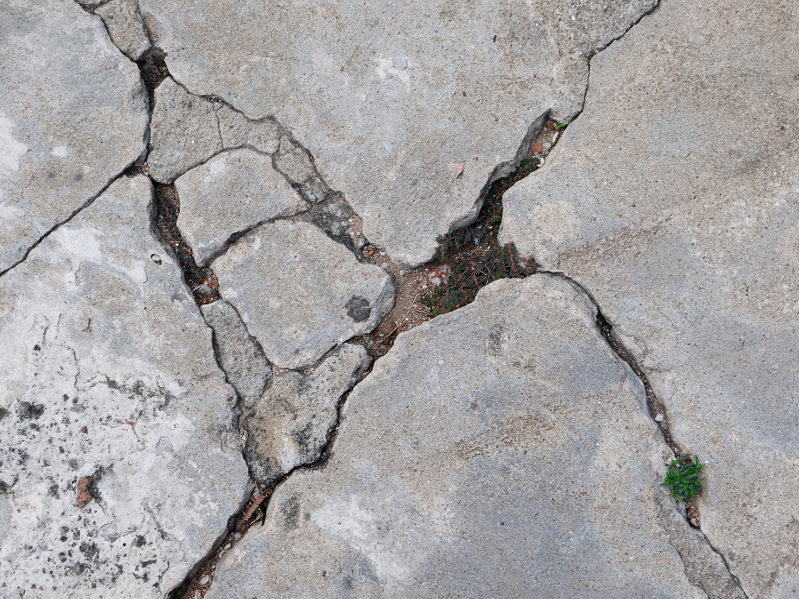Step 1: Choose the Right Product
You cannot use concrete to seal cracks in concrete surfaces because it shrinks when drying, and the main cause of cracking is shrinkage. Instead, you need to use a concrete repair mix such as latex patching material or epoxy compounds.

Step 2: Prepare the Surface
Use a chisel and a small hammer to knock away loose, cracked, or crumbling concrete around the crack. Chip away the concrete to about an inch below the surface and clean the area with a wire brush or broom. If your crack has grease on it, look for a product at your auto parts store or local hardware that can help remove the residue. A wire brush helps to dislodge any loose or lingering particles between the cracks. Keep in mind that this will be dusty work so make sure to wear your protective gear before getting started.
Step 3: Fix the Crack with Your Selected Product
Most of the products used to seal cracks in concrete can be used straight out of the tube. All you need to do is to shake the bottle, load, and apply. First, you need to cut the tip to the same width of the crack so you do not overfill during application. Apply the material steadily along the crack. Most repair materials tend to settle into the crack on the first application, so expect to add another layer but do not over-fill. Smooth out the material using acetone (for polyurethane products) or a wet sponge (for latex-based products) to remove excess and match the slab level. If necessary, wait for at least 15 minutes before applying a second layer. It is important to allow the product to cure for 24 hours before opening the area to traffic.
Is it Worth Fixing or Should It Be Replaced?
- Sunken Concrete
A subgrade that was not prepared properly can lead to sunken concrete surfaces. Using loose dirt for the subgrade causes it to settle due to rainwater going underneath the concrete. This means that the concrete will be unsupported making it more susceptible to sinking. There are high chances that the concrete was subjected to extreme weight and after the subgrade was compacted, causing it to sink. This problem can often be fixed with special equipment that can raise the concrete above the ground without damaging the slab. The process will involve removing the concrete and existing subgrade, replacing subgrade with compactable material, compacting the subgrade, and then pouring back concrete.
- Widespread, Deep Cracks
The concrete surface calls for a replacement when it is cracked all over through the slab. This could be caused by erosion of subgrade, improper preparation of subgrade, or the heavyweight of large trucks. To solve this problem, you need to remove the existing concrete and subgrade and replace the subgrade with a compactible material. Sometimes, the existing material can still be used but if it raises concerns then a compactible one would rather replace it. Next, compact the subgrade and then pour back concrete.
You can always contact your local soils engineer to get advice on the best material for preparing the subgrade. There are times when using the existing material is fine but if it keeps cracking, then something needs to be done about it. These are the steps to follow whether you contract a professional or choose to handle the job yourself. It is also important to weigh between repair and replacement depending on the extent of the problem and frequency of occurrence.
